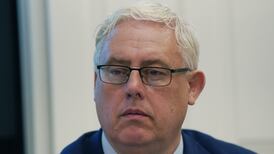The body of Boston Marathon bombing suspect Tamerlan Tsarnaev, who was the subject of a massive manhunt and died after a gun battle with police, has been claimed.
Department of Public Safety spokesman Terrel Harris said a funeral home retained by Tsarnaev's family picked up the 26-year-old's remains.
The medical examiner determined Tsarnaev’s cause of death on Monday, but officials said it would not be made public until his remains were released and a death certificate was filed. It was unclear whether the death certificate had been filed.
Tsarnaev's widow, Katherine Russell, who has been living with her parents in Rhode Island, learned this week that the medical examiner was ready to release his body and wanted it released to his side of the family, her lawyer Amato DeLuca said.
Tsarnaev's uncle Ruslan Tsarni, of Maryland, said on Tuesday that the family would take the body.
After the hearse believed to be carrying Tsarnaev’s body left Boston, television stations reported that their helicopters followed it to the Dyer Lake Funeral Home where about 20 protesters had gathered.
A hearse was later seen leaving the home escorted by two police cars.
Dyer-Lake funeral director Tim Nye told The Sun-Chronicle newspaper the body was only brought to his funeral home temporarily and was taken to another facility, but did not say where.
Tsarnaev, who had appeared in surveillance photos wearing a black cap and was identified as Suspect No. 1, died days after the bombing.
The April 15 bombing, using pressure cookers packed with explosives, nails, ball bearings and metal shards near the marathon’s finish line, killed three people and injured more than 260.
The authorities said Tsarnaev and his younger brother later killed a Massachusetts Institute of Technology campus police officer and carjacked a driver, who escaped.
They said during the gun battle with police, the Tsarnaev brothers, ethnic Chechens from Russia who moved to the US about a decade ago, set off another pressure cooker bomb and tossed grenades before the older brother ran out of ammunition.
Police said they tackled the older brother and began to handcuff him but had to dive out of the way at the last second when the younger brother, 19-year-old Dzhokhar Tsarnaev, drove a stolen car at them.
They said the younger brother ran over his brother’s body as he drove away from the scene to escape.
Dzhokhar was captured later, wounded and bloody, hiding in a boat in a suburban Boston back garden.
He is in a federal prison and faces a charge of using a weapon of mass destruction to kill.
The mother of the brothers mother insists the allegations against them are lies.
Three of Dzhokhar Tsarnaev’s student friends were arrested and accused of helping after the marathon bombing to remove a laptop and backpack from his college room before the FBI searched it.
A Republican senator yesterday asked President Barack Obama’s administration to explain how one of the students entered the US without a valid student visa.
Senator Chuck Grassley made the request in a three-page letter to Department of Homeland Security Secretary Janet Napolitano.
He asked for additional details about the student visa applications for Azamat Tazhayakov and Dias Kadyrbayev, college roommates from Kazakhstan charged with obstruction of justice in the marathon bombing case, and how Tazhayakov was allowed to re-enter the US in January.
Tazhayakov was a student at the University of Massachusetts Dartmouth when he left the country in December.
In early January, his student visa status was terminated because he was academically dismissed by the university.
The third student arrested, Robel Phillipos, was charged with making false statements to law enforcement officers during a terrorism investigation.
The lawyers for the Kazakh students said their clients had nothing to do with the bombing and were just as shocked by it as everyone else.
Phillipos’ lawyer said the only allegation against him was “he made a misrepresentation”.
AP










